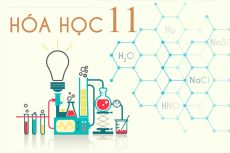Read the following passage and choose the best answer (A, B, C, D):
OPEC was established at a conference held in Baghdad Sept. 10–14, 1960, and was formally constituted in January 1961 by five countries: Saudi Arabia, Iran, Iraq, Kuwait, and Venezuela. Members admitted afterward include Qatar (1961), Indonesia and Libya (1962), Abū Ẓabī (1967), Algeria (1969), Nigeria (1971), Ecuador (1973), and Angola (2007). The United Arab Emirates assumed Abū Ẓabī’s membership in the 1970s. Gabon, which had joined in 1975, withdrew in January 1995, but it had relatively insignificant oil reserves. Ecuador suspended its membership from OPEC from December 1992 until October 2007, while Indonesia suspended its membership beginning in January 2009. OPEC’s headquarters, first located in Geneva, was moved to Vienna in 1965. OPEC members coordinate policies on oil prices, production, and related matters at semiannual and special meetings of the OPEC Conference. The Board of Governors, which is responsible for managing the organization, convening the Conference, and drawing up the annual budget, contains representatives appointed by each member country; its chair is elected to a one-year term by the Conference. OPEC also possesses a Secretariat, headed by a secretary – general appointed by the Conference for a three-year term; the Secretariat includes research and energy-studies divisions. OPEC members collectively own about two-thirds of the world’s proven petroleum reserves and account for two-fifths of world oil production. Members differ in a variety of ways, including the size of oil reserves, geography, religion, and economic and political interests. Four members – Kuwait, Qatar, Saudi Arabia, and the United Arab Emirates – have very large per capita oil reserves; they also are relatively strong financially and thus have considerable flexibility in adjusting their production. Saudi Arabia, which has the largest reserves and a relatively small (but fast-growing) population, has traditionally played a dominant role in determining overall production and prices Because OPEC has been beset by numerous conflicts throughout its history, some experts have concluded that it is not a cartel – or at least not an effective one – and that it has little, if any, influence over the amount of oil produced or its price. Other experts believe that OPEC is an effective cartel, though it has not been equally effective at all times. The debate largely centers on semantics and the definition of what constitutes a cartel. Those who argue that OPEC is not a cartel emphasize the sovereignty of each member country, the inherent problems of coordinating price and production policies, and the tendency of countries to renege on prior agreements at ministerial meetings. Those who claim that OPEC is a cartel argue that production costs in the Persian Gulf are generally less than 10 percent of the price charged and that prices would decline toward those costs in the absence of coordination by OPEC. The influence of individual OPEC members on the organization and on the oil market usually depends on their levels of reserves and production. Saudi Arabia, which controls about one-third of OPEC’s total oil reserves, plays a leading role in the organization. Other important members are Iran, Iraq, Kuwait, and the United Arab Emirates, whose combined reserves are significantly greater than those of Saudi Arabia. Kuwait, which has a very small population, has shown a willingness to cut production relative to the size of its reserves, whereas Iran and Iraq, both with large and growing populations, have generally produced at high levels relative to reserves. Revolutions and wars have impaired the ability of some OPEC members to maintain high levels of production.
2. The word “semiannual” in paragraph 2 mostly means ______














